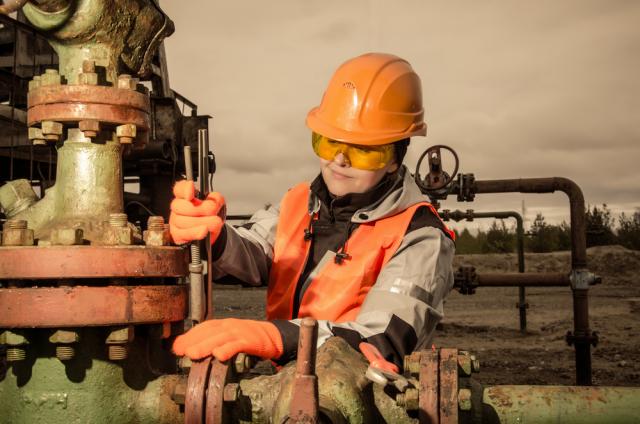
A multifaceted approach is needed to address the oil and gas industry's labor shortage, expert says. (Source: Polina Petrenko/Shutterstock.com)
[Editor’s note: Views reflected by the author are her own and do not necessarily reflect the views of EY or its member firms.]
U.S. oil and gas companies have relied on a global workforce for years, with laws, regulations and policies, generally enabling employers to find and recruit workers for a variety of jobs, regardless of location. However, a number of recent regulatory and policy changes in the U.S. legal immigration landscape have left the industry facing a critical labor challenge that could hinder growth.
From these changes, oil and gas companies now have an opportunity to develop and drive a talent strategy that accounts for this change in the labor force. To overcome immigration-related workforce challenges, energy firms need to ramp up their digital spend, expand their automated workforce and restructure traditional hiring models.
Influx of digital labor
When crude prices drove the oil market down, operational efficiency and cost cutting, often in the form of workforce reductions, became an immediate priority for energy firms. Increasingly, oil and gas companies were no longer graded on reserves growth and instead were judged by their cost effectiveness. This metric has held steady even as oil prices have stabilized over the last couple of years.
In light of this environment, oil and gas executives have upped their budget for digital labor and plan to continue to do so, according to a recent EY survey. Specifically, these firms have invested in automation to cost-effectively improve production. However, while this initiative was originally implemented for back-office functions, such as accounting, taxes and human resources, energy firms are also expanding their use of automation into the field—positions traditionally occupied by skilled immigrant labor — as a means to navigate labor shortages.
Talent pool changes
Despite technology’s growth, digital labor can never fully replace a traditional oil and gas workforce. Due to the current labor environment, oil and gas firms will have to make additional changes—both domestically and internationally—to fill their talent needs.
First, oil and gas companies need to build a pipeline of workers domestically. While recruiting younger generations to join the energy field appears to be a daunting task, in actuality a large majority of consumers (80%) responding to a recent nationwide poll EY conducted believe the oil and gas field is important to the U.S. economy—including millennials. Oil and gas companies should emphasize the industry’s value to Americans’ everyday lives when speaking with younger generations while highlighting the ability to stray from a normal “desk job” career path and work globally—attractive qualities to the new-age employee.
Overseas, international oil and gas companies have the opportunity to develop centers of excellence to employ workers in other countries. Increasingly, these countries are pressuring oil and gas companies to use local resources and labor. Thus, such a move could be seen beneficial for the company, the employee and the home country. Furthermore, these satellite hubs will serve as prime destinations to attract geophysicists and chemists, which energy firms historically draw from foreign countries.
A multifaceted approach
The energy industry’s automation push is paying dividends as it faces its latest challenge—a labor shortage. However, digital labor isn’t a one-stop workforce solution, and many oil and gas firms aren’t leveraging it to its full potential. Now, it’s incumbent on these energy firms to transform their recruiting strategies, both domestically and internationally, to overcome immigration challenges, embrace new technologies and strategies and develop a foundation for future success.
Rachel Everaard is southwest region people advisory services leader for Ernst & Young LLP.
Recommended Reading
BP’s Kate Thomson Promoted to CFO, Joins Board
2024-02-05 - Before becoming BP’s interim CFO in September 2023, Kate Thomson served as senior vice president of finance for production and operations.
Magnolia Oil & Gas Hikes Quarterly Cash Dividend by 13%
2024-02-05 - Magnolia’s dividend will rise 13% to $0.13 per share, the company said.
TPG Adds Lebovitz as Head of Infrastructure for Climate Investing Platform
2024-02-07 - TPG Rise Climate was launched in 2021 to make investments across asset classes in climate solutions globally.
Air Products Sees $15B Hydrogen, Energy Transition Project Backlog
2024-02-07 - Pennsylvania-headquartered Air Products has eight hydrogen projects underway and is targeting an IRR of more than 10%.
HighPeak Energy Authorizes First Share Buyback Since Founding
2024-02-06 - Along with a $75 million share repurchase program, Midland Basin operator HighPeak Energy’s board also increased its quarterly dividend.





